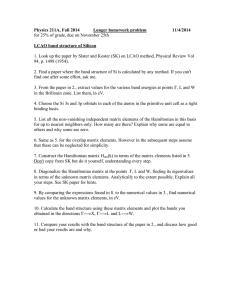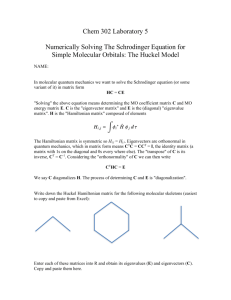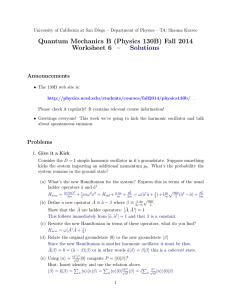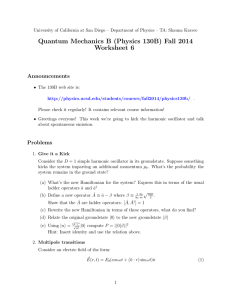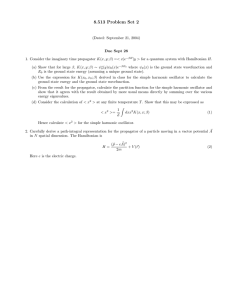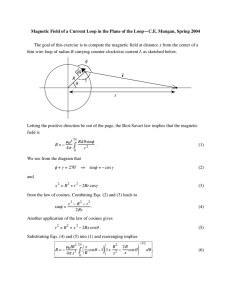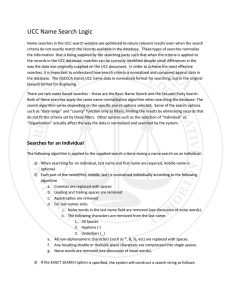LOYOLA COLLEGE (AUTONOMOUS), CHENNAI – 600 034
advertisement
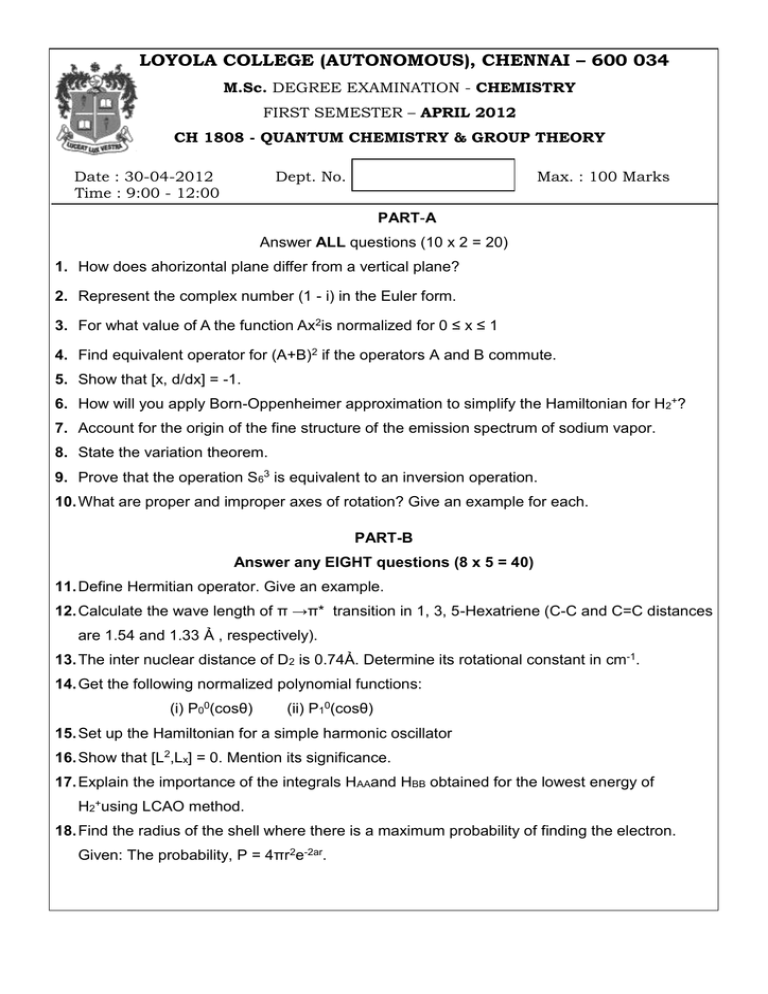
LOYOLA COLLEGE (AUTONOMOUS), CHENNAI – 600 034 M.Sc. DEGREE EXAMINATION - CHEMISTRY FIRST SEMESTER – APRIL 2012 CH 1808 - QUANTUM CHEMISTRY & GROUP THEORY Date : 30-04-2012 Time : 9:00 - 12:00 Dept. No. Max. : 100 Marks PART-A Answer ALL questions (10 x 2 = 20) 1. How does ahorizontal plane differ from a vertical plane? 2. Represent the complex number (1 - i) in the Euler form. 3. For what value of A the function Ax2is normalized for 0 ≤ x ≤ 1 4. Find equivalent operator for (A+B)2 if the operators A and B commute. 5. Show that [x, d/dx] = -1. 6. How will you apply Born-Oppenheimer approximation to simplify the Hamiltonian for H2+? 7. Account for the origin of the fine structure of the emission spectrum of sodium vapor. 8. State the variation theorem. 9. Prove that the operation S63 is equivalent to an inversion operation. 10. What are proper and improper axes of rotation? Give an example for each. PART-B Answer any EIGHT questions (8 x 5 = 40) 11. Define Hermitian operator. Give an example. 12. Calculate the wave length of π →π* transition in 1, 3, 5-Hexatriene (C-C and C=C distances are 1.54 and 1.33 Ả , respectively). 13. The inter nuclear distance of D2 is 0.74Ả. Determine its rotational constant in cm-1. 14. Get the following normalized polynomial functions: (i) P00(cosθ) (ii) P10(cosθ) 15. Set up the Hamiltonian for a simple harmonic oscillator 16. Show that [L2,Lx] = 0. Mention its significance. 17. Explain the importance of the integrals HAAand HBB obtained for the lowest energy of H2+using LCAO method. 18. Find the radius of the shell where there is a maximum probability of finding the electron. Given: The probability, P = 4πr2e-2ar. 19. The term symbol of a particular atomic state is 6S5/2. Suggest a possible electronic configuration. 20. Obtain the Pauli antisymmetric wave function for the excited state He atom. 21. Identify the point groups of biphenyl and chloroform molecules mentioning their symmetry elements and operations. 22. The order and the classes of a molecule are 20 and 8 respectively. Identify the number and the dimensions of the irreducible representations. PART-C Answer any FOUR questions (4 x 10 = 40) 23. (a) Write expressions for the third levels for Ψnand En for a particle in 3D box. (b) Draw the MO diagram for the π-electrons in 1, 3-butadienyl anion radical. 24. Set up the Schrodinger equation for a rigid rotor and hence solve for its energy and wave function. 25. (a) Define the following. (i) Hermite equation (ii) Hermite polynomials (b) Get the normalized functions for the simple harmonic oscillator for its third vibrational level. 26. (a) Show that for anhydrogen like atom, in its ground state, the average distance of the electron from the nucleus is 3/2 times the most probable distance. Given: Ψ 1s = 1/(π)1/2(Z/a0)3/2exp(-Zr/ao). (b) Highlight the features that distinguish the Huckel method from other LCAO methods. 27. (a) Obtain the value of [x, H]. Mention its significance. (b) Apply Huckel’s method to allyl cation and obtain expressions for the energy levels. 28. Arrive at the IR and Raman active modes of vibrations of trans-1,2-dibromo ethylene molecule, using the following character table and verify the relevance of mutual exclusion principle. C2h E C2 i h Ag +1 +1 +1 +1 Rz Bg +1 -1 Au +1 +1 -1 -1 Bu +1 -1 +1 x, y +1 -1 -1 x2, y2, z2, xy Rx, Ry xz, yz z - **************
